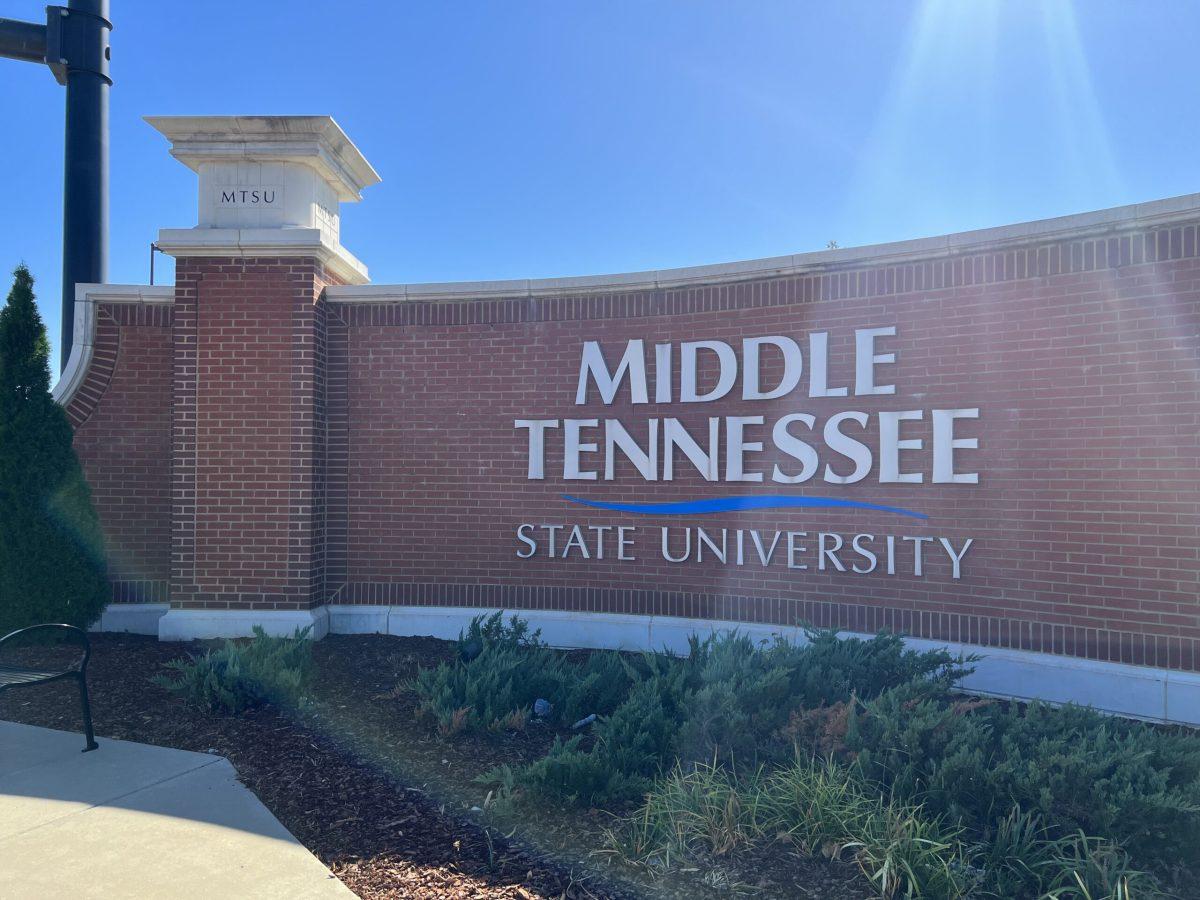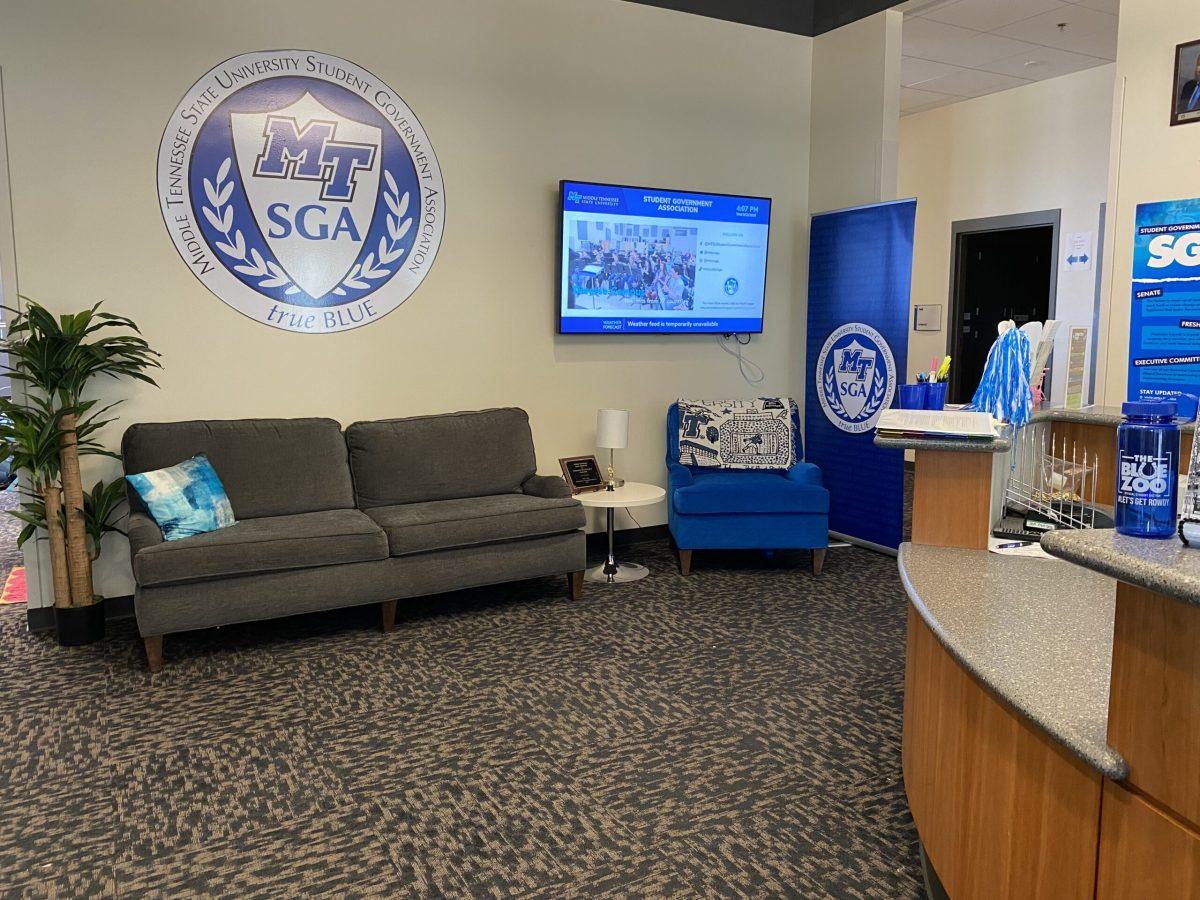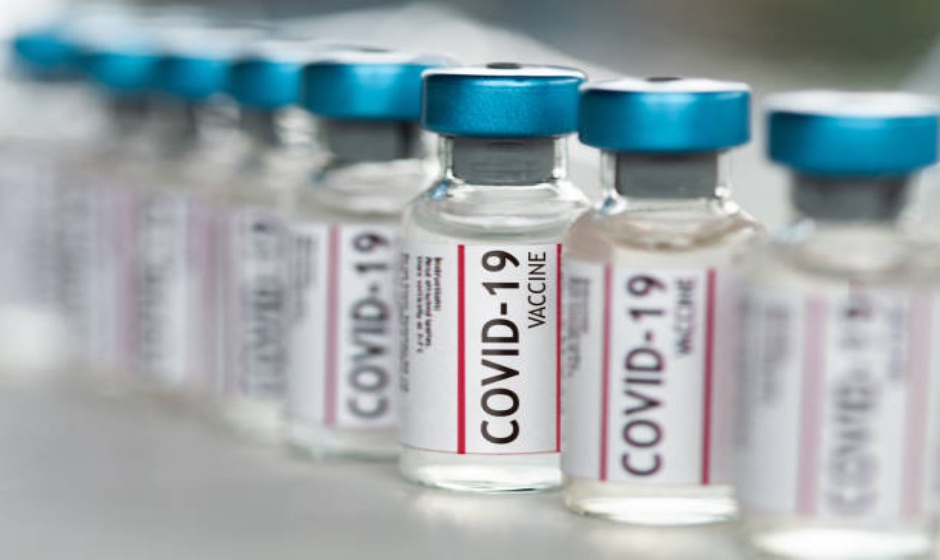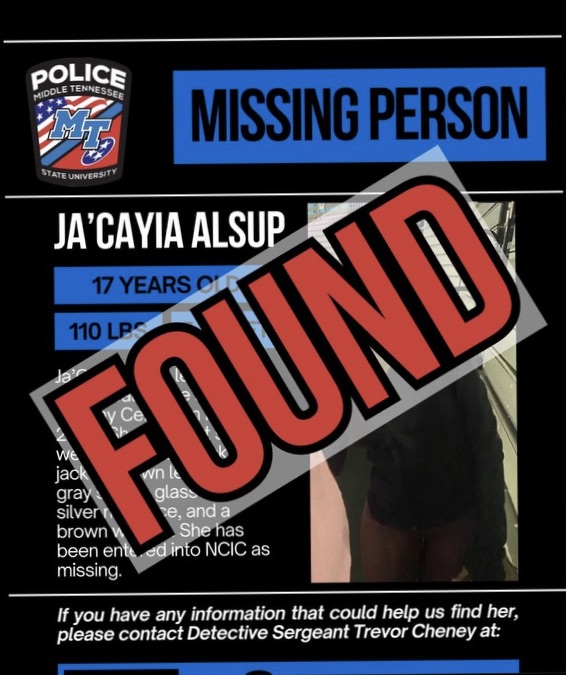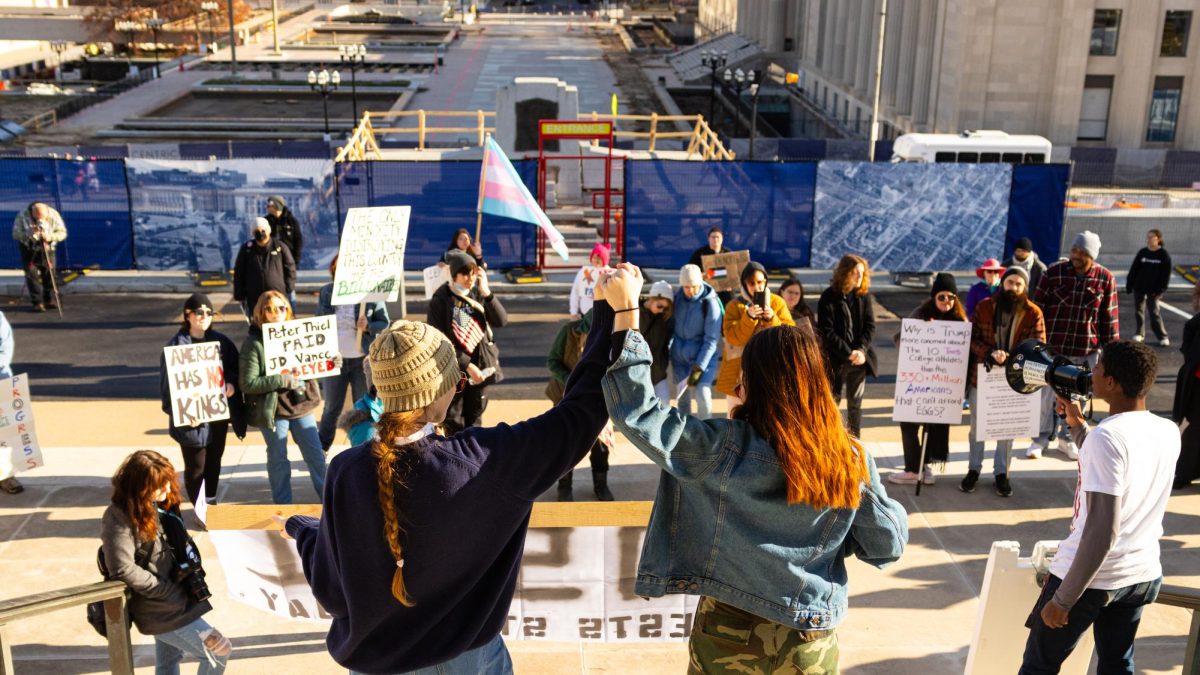Story by Corey Nave | Contributing Writer
Seemingly random painted dashes and arrows litter Middle Tennessee State University’s campus. However, these dashes and arrows are not random at all. They serve an important role in the protection of MTSU’s buried infrastructure. These painted marks, called utility markings, also keep construction workers and ordinary citizens safe.

Utility markings mark the exact location of infrastructure buried underground. Infrastructure like sewer and power lines that crisscross below streets and sidewalks.
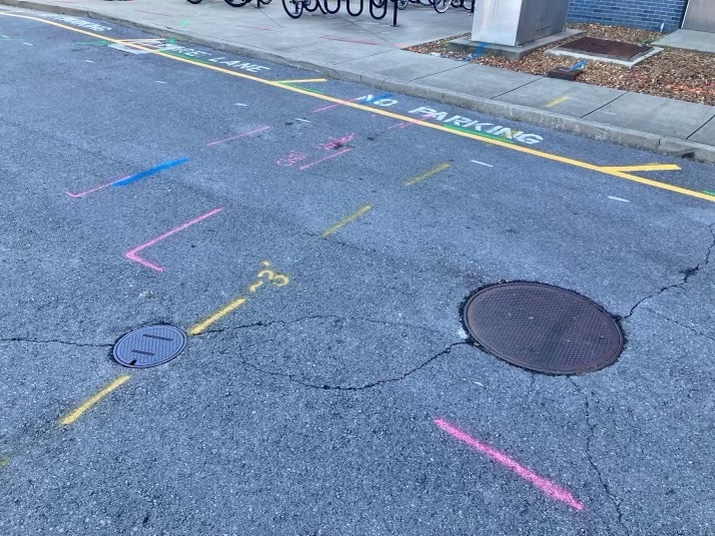
The American Public Works Association implemented the uniform color code to create a simple way to mark infrastructure for excavation projects. The uniform color code contains eight colors:
— White: Proposed Excavation
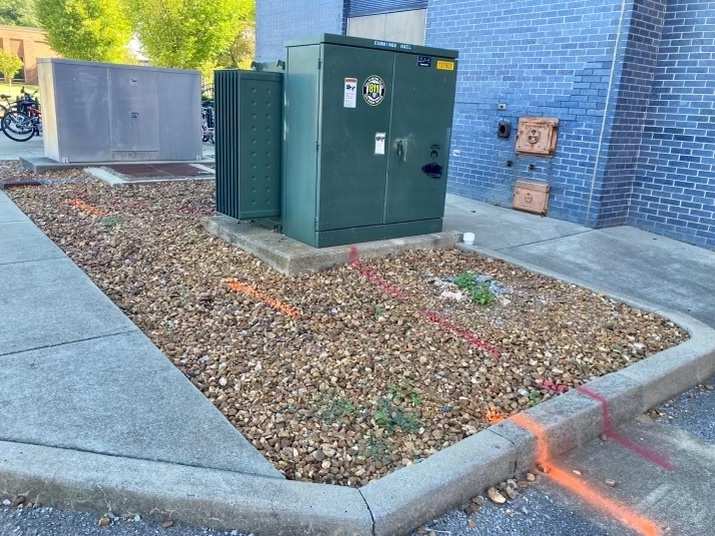
— Pink: Temporary Survey Markings
— Red: Electric Power Lines, Cables, Conduit, and Lighting Cables
— Yellow: Gas, Oil, Steam, Petroleum, and Gaseous Materials
— Orange: Telecommunication, Alarm, and Signal Lines, Cables, or Conduit
— Blue: Potable Water
— Purple: Reclaimed Water, Irrigation, and Slurry Lines
— Green: Sewer and Drain Lines
Anyone can get a utility marked by simply calling 811, connecting the caller with an agent who collects details about the caller’s project. Then the agent alerts the appropriate utility providers to come to the caller’s job site and place utility markings.
Each utility provider will send a team to locate and mark their utilities. The teams will most likely use one of three methods. The first is ground penetrating radar, or GPR. This method locates utilities by bouncing radio waves off them.
The second and third are electromagnetic profiling locators and radio frequency pipe and cable locators. These methods locate utilities by emitting a frequency—electromagnetic, or EM, and radio, or RF—that resonates with the utility and returns to the receiver. GPR can identify both conductive and non-conductive utilities, but EM and RF can only identify conductive utilities.
According to the 2020 study created using information from the Damage Information Reporting Tool, the Common Ground Alliance, or CGA, concluded that the root cause for most damages was the failure of individuals to contact an 811 service. These damages posed a risk to the individuals digging as well as their community and the environment.
For example, striking a natural gas pipeline can cause a range of injuries from suffocation to third-degree burns. 811 callers receive financial protection, while those who do not call 811 are liable for all utility damages. The CGA recommends to always contact an 811 service before digging any hole. They specifically note that no matter the size of the project or one’s familiarity with a dig site, it is best to call 811.
More information regarding digging projects in Tennessee can be found at www.tenn811.com.
To contact News Editor Matthew Giffin and Assistant News Editor Kailee Shores, email newseditor@mtsusidelines.com.
For more news, visit www.mtsusidelines.com, or follow us on Facebook at MTSU Sidelines or on Twitter at @Sidelines_News.


